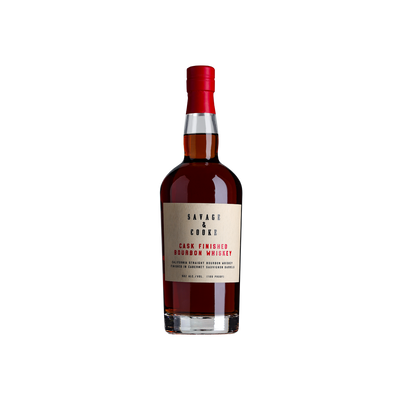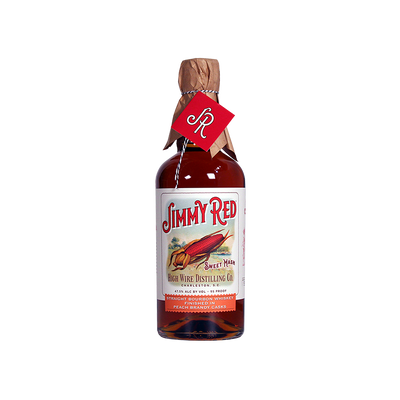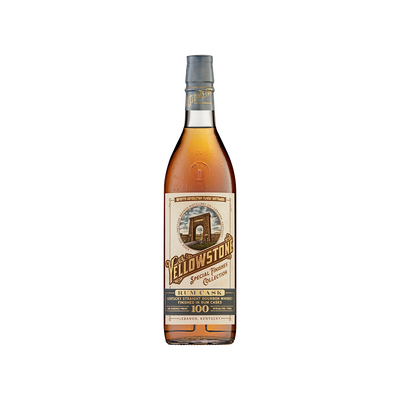Cask Finished Bourbon
What is Cask Finished Bourbon?
Cask finished bourbon is a specific type of Bourbon Whiskey that receives additional aging in a secondary barrel after completing its initial maturation period. The defining characteristic of cask finished bourbon is this extra aging step, where distillers transfer the fully matured whiskey into barrels that previously held other spirits, wines, or fortified beverages like sherry, port, rum, or Madeira. This secondary aging process imparts additional flavors, aromas, and complexity that distinguish it from traditional straight bourbon.
Learn More About Cask Finished Bourbon
What makes Cask Finished Bourbon unique?
Cask finished bourbon takes traditionally aged bourbon and gives it a second maturation in barrels that previously held other spirits, wines, or fortified beverages like port, sherry, rum, or even beer. This additional aging period—typically ranging from a few months to several years—allows the bourbon to absorb flavors from the previous barrel's contents, creating layers of complexity that straight bourbon simply can't achieve. While regular bourbon develops its character solely from new charred oak, cask finished expressions gain distinctive notes like dark fruit sweetness from port barrels, nutty richness from sherry casks, or tropical undertones from rum barrels, making each finish a unique flavor adventure.
How is Cask Finished Bourbon made?
Cask finished bourbon starts as traditional bourbon that's already completed its primary aging in new charred oak barrels, then gets transferred to different barrels that previously held other spirits like sherry, port, rum, or wine for an additional aging period. This secondary maturation typically lasts anywhere from a few months to several years, allowing the bourbon to absorb flavors, colors, and aromas from the previous barrel's contents. The result is a bourbon with layered complexity that combines the classic vanilla and caramel notes from the original aging with unique characteristics imparted by the finishing cask.
How do you drink Cask Finished Bourbon?
Cask finished bourbon shines brightest when sipped neat or with just a splash of water to open up those complex secondary flavors from wine barrels, port casks, or rum barrels. While it works beautifully on the rocks, you'll want to avoid diluting those nuanced finishing notes too quickly. When mixing cocktails, reach for cask finished bourbon in spirit-forward drinks like an Old Fashioned or Manhattan where those extra layers of flavor can complement rather than compete with other ingredients.
How do I choose good Cask Finished Bourbon?
Start by considering the base bourbon's profile—look for distilleries with solid reputations whose regular expressions you already enjoy, since the finishing process should complement rather than mask the original character. Match your cask finish to your intended use: port and sherry finishes add rich sweetness that works beautifully in Old Fashioneds, while rum barrel finishes bring tropical notes perfect for experimenting with tiki-style drinks. For sipping neat, opt for shorter finishing periods (3-6 months) that add subtle complexity, but if you're mixing cocktails, longer finishes (12+ months) can provide the bold flavors needed to stand up against other ingredients.
Nutritional Information
Typical Calorie Range per Ounce: 64-70 calories
Typical Carbohydrate Range per Ounce: 0-0.1 grams
Typical Sugar Range per Ounce: 0 grams
Typically Gluten Free: Yes
While bourbon is generally considered gluten-free due to the distillation process that removes gluten proteins, those with celiac disease or severe gluten sensitivities should always check the specific product information and consult with manufacturers. Cask finishing processes can occasionally introduce trace elements, so verification with individual brands remains the safest approach for those with strict dietary requirements.
Scrolled this far? Your reward? Cask Finished Bourbon Trivia!
- The "Angel's Share" becomes the "Devil's Cut" in reverse. When bourbon moves from its original barrel into a finishing cask, it actually pulls trapped whiskey from deep within the wood staves of that second barrel. This means your finished bourbon contains liquid that may have aged decades longer than the stated age on the bottle – sometimes whiskey that soaked into rum or port barrels years before your bourbon was even distilled.
- Temperature shock creates flavor magic. Master distillers intentionally move bourbon between barrels during seasonal temperature swings. The wood expansion and contraction from this thermal stress forces the bourbon deeper into the finishing barrel's grain, extracting compounds that would never develop under stable conditions. Some distilleries even use heated warehouses to artificially create this "wood breathing" effect.
- Certain finishing barrels are "seasoned" with other spirits first. Before receiving bourbon, many finishing casks undergo a secret preparation process where they're filled with the original spirit (sherry, rum, wine) for weeks or months, then emptied. This isn't about residual liquid – it's about saturating the wood with specific compounds that will interact chemically with the bourbon's congeners to create entirely new flavor molecules.
- The wood species of finishing barrels can completely change bourbon's color chemistry. While American oak gives bourbon its classic amber hue, European oak finishing barrels contain different tannin structures that can shift the liquid toward deep mahogany or even reddish copper tones. Some Japanese mizunara oak finishes actually make bourbon appear lighter while intensifying its flavor – the opposite of what most people expect from additional aging.
- Finishing time is measured in weeks, not years, but the effects compound exponentially. Most cask finishing happens in just 6-12 weeks, but the flavor transformation rivals years of traditional aging. This happens because the bourbon's high alcohol content and the pre-seasoned wood create a hyper-accelerated extraction environment. Some distillers rotate barrels weekly during finishing to maximize this effect, creating flavor complexity that would take decades to achieve naturally.
Higher-proof spirits can be intense. Mix carefully, taste thoughtfully, and enjoy responsibly.
Gift message (optional)





